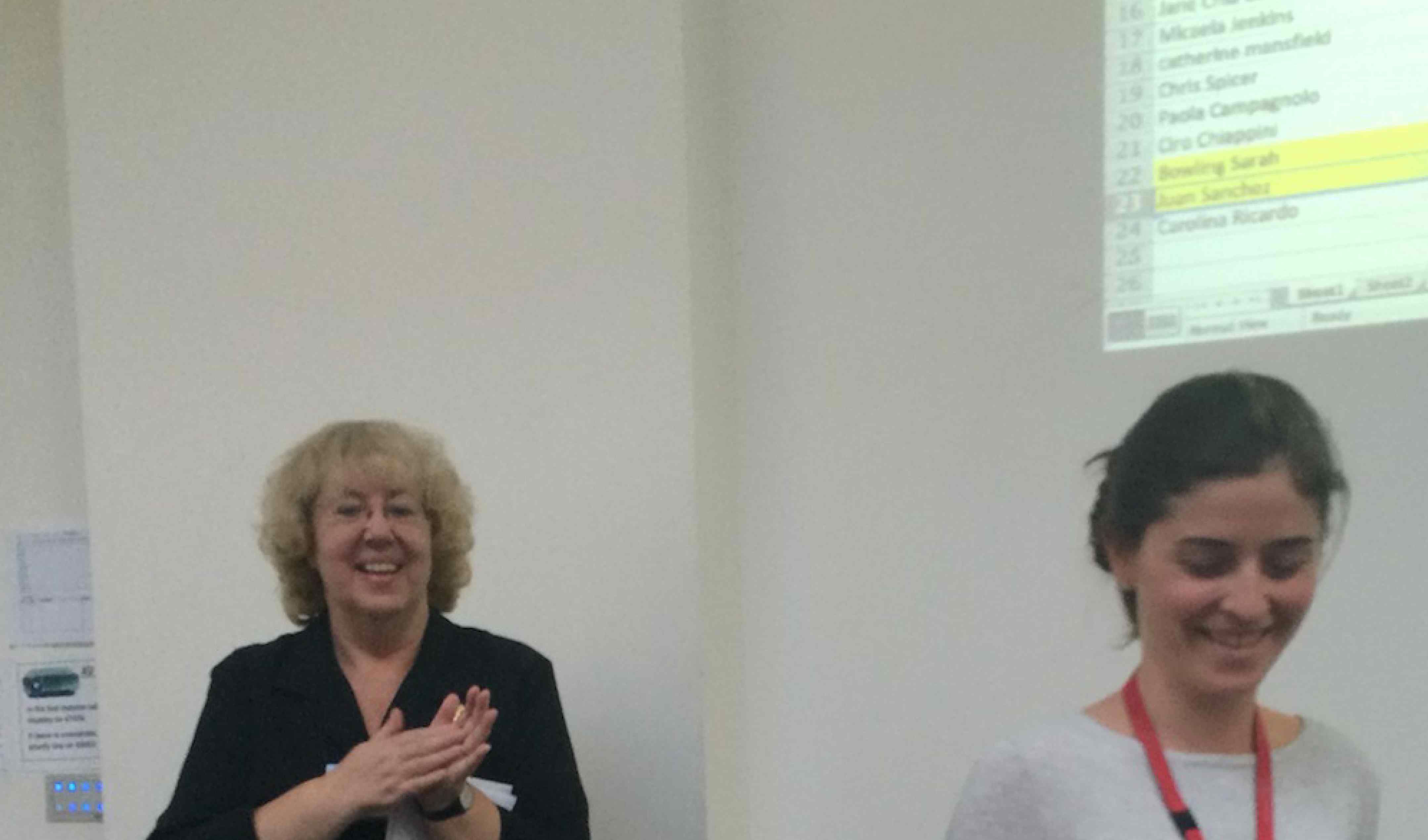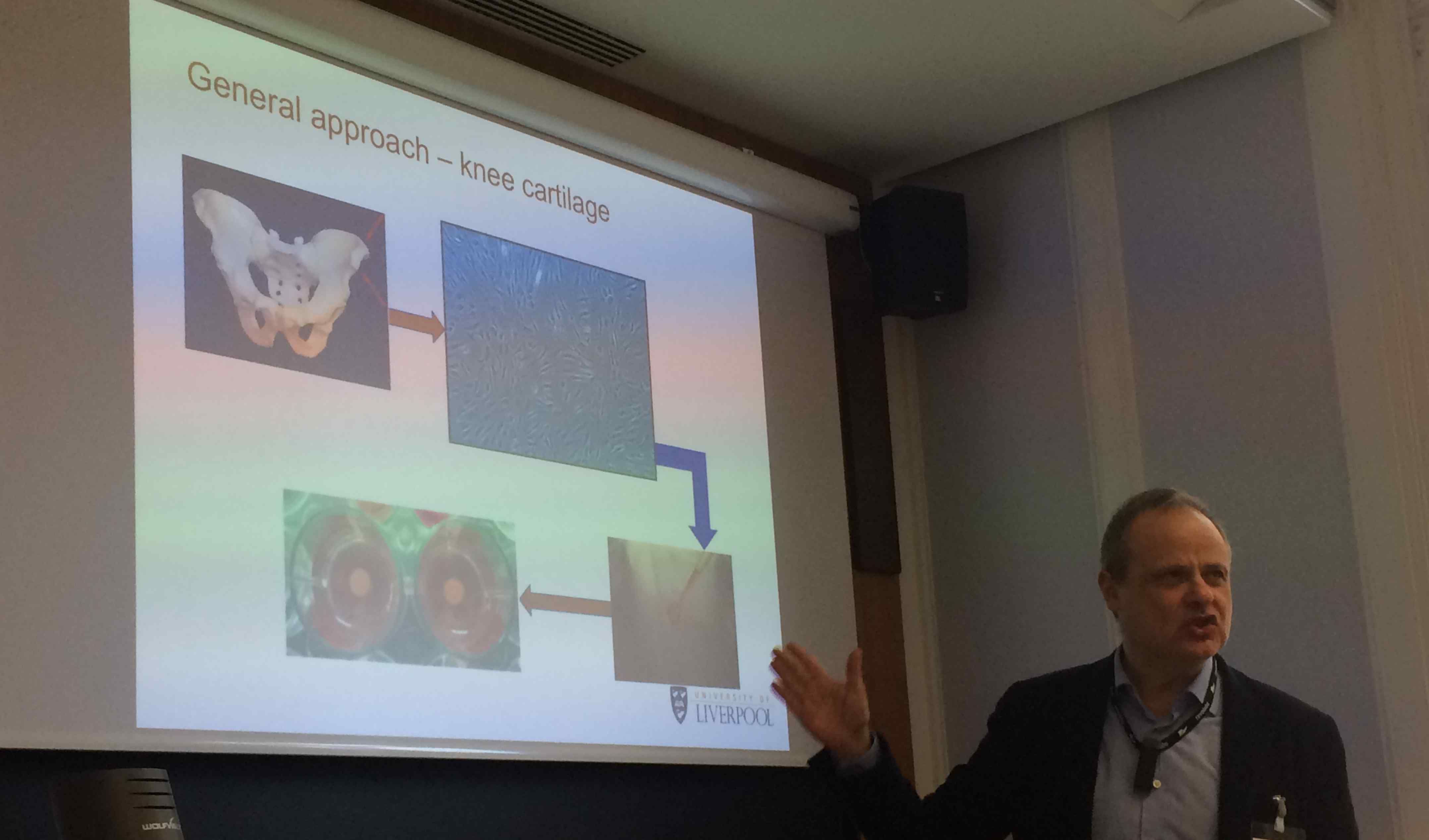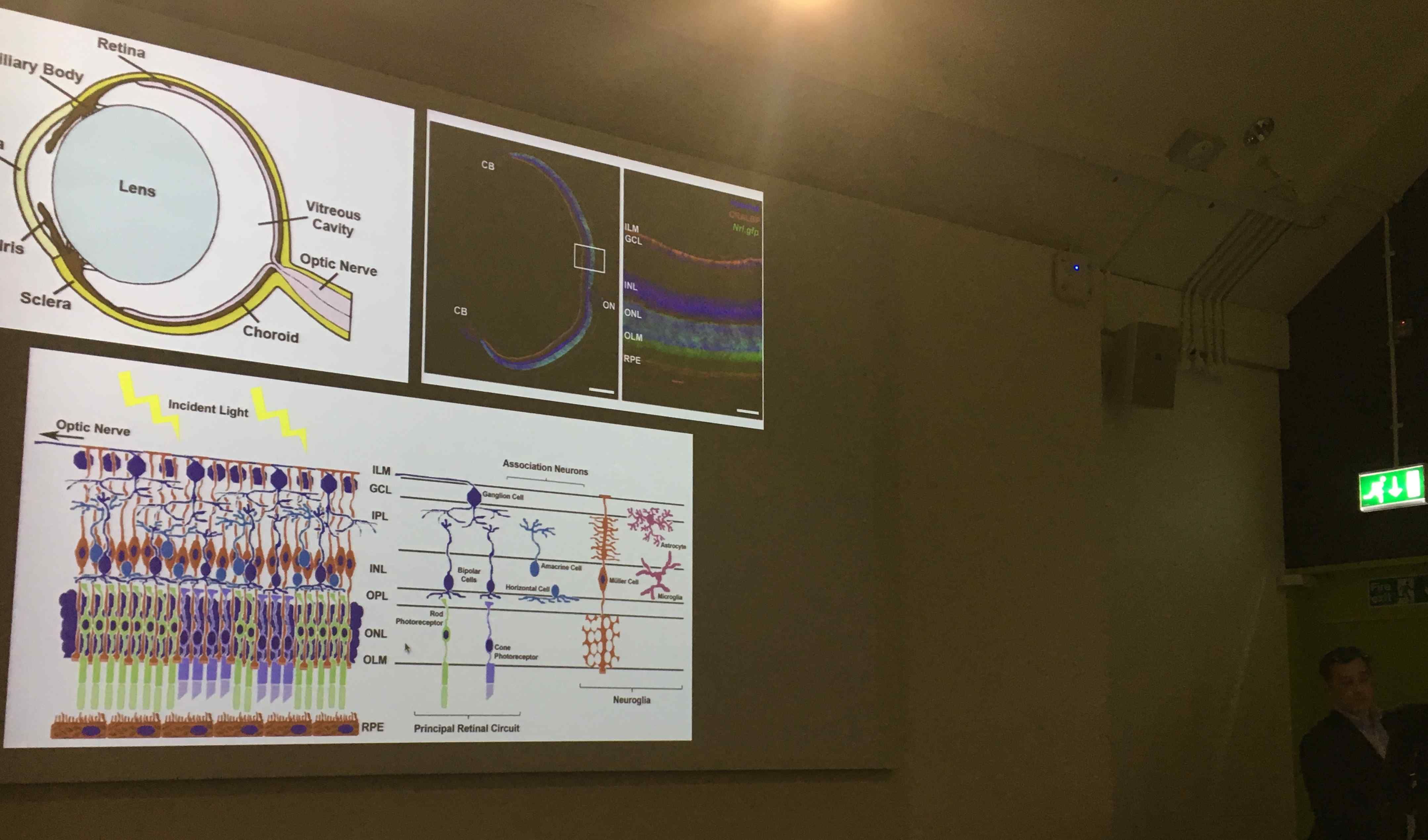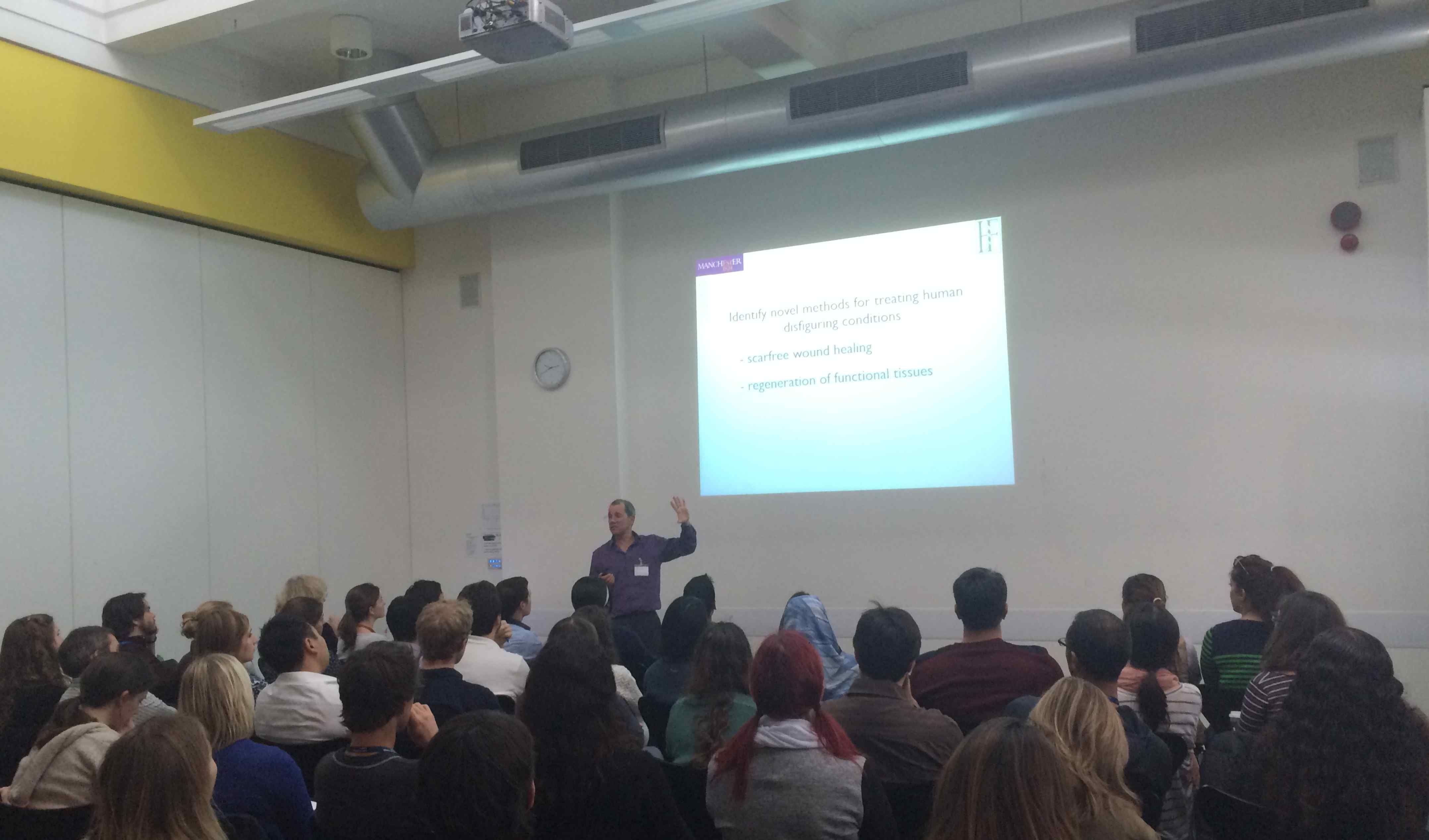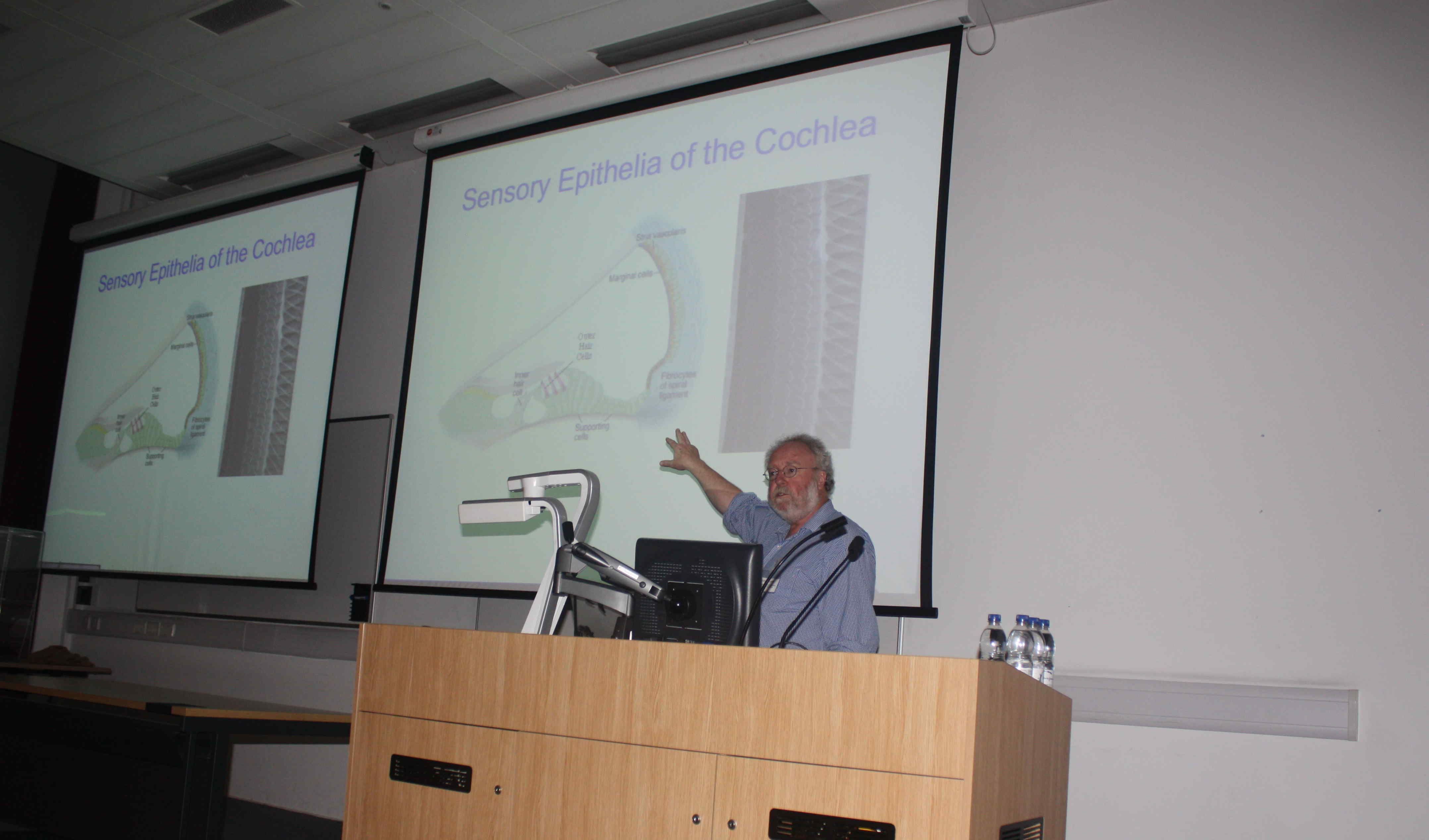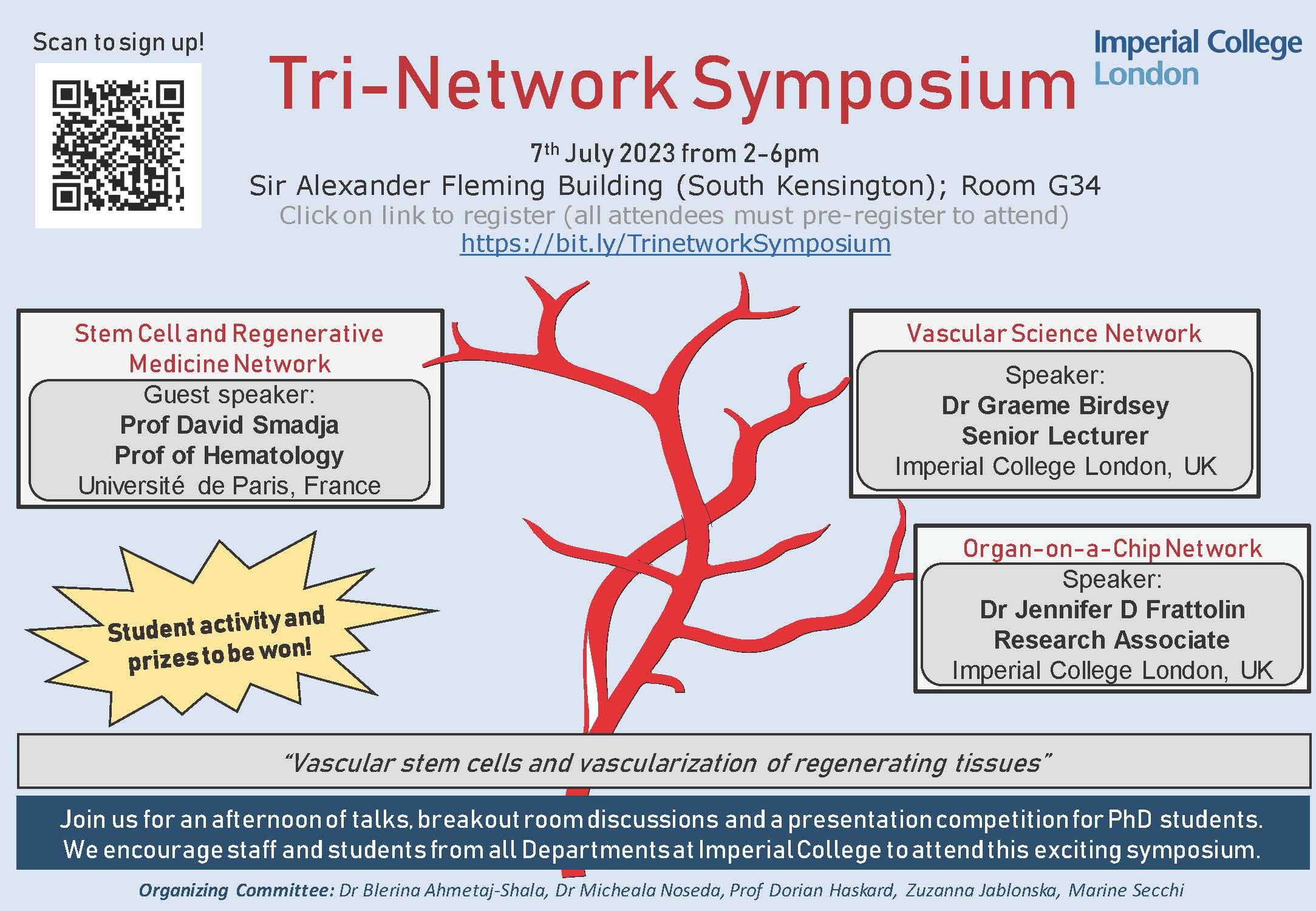2021 ISRMN Intravital Microscopy Workshop
Wednesday 22nd September 2021, 2.35-6.00pm
Imperial College London, Sir Alexander Flemming Building
Seminar Room G34 and Zoom online session
The Intravital Microscopy Workshop hosted by ISRMN was held on 22 September. The workshop was designed primarily for colleagues from Imperial and London concerned with using state-of-art imaging technologies and covered a spectrum of a programme on stem cell and regenerative medicine research. It was also to help familiarise researchers with the use of novel qualitative imaging methods. Participants were able to join online or meet face-to-face during this afternoon.
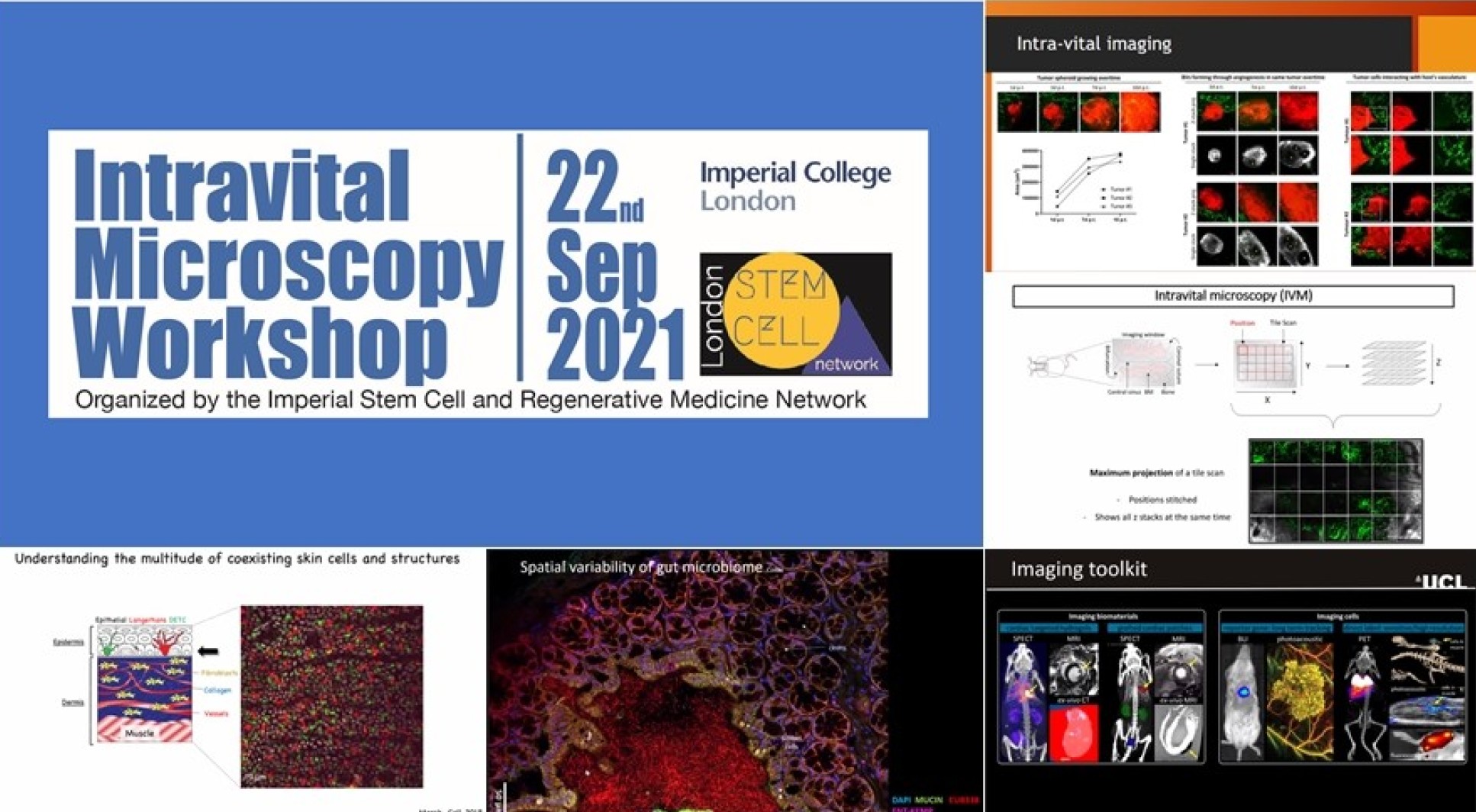
Keynote speaker Dr Valentina Greco from Yale presented an interesting project on tissue regeneration. She showed fantastic examples of how a mosaic of mutant cells affect normal tissue and epidermal homeostasis. Tracking the same live tissue over time by intravital imaging, they managed to track the fate of mouse skin epithelium burdened with activated Wnt/β-catenin stem cells. They also nicely showed that cellular mechanisms provide the adult epidermis with an optimal response to mutational and non-mutational insults.
Daniel Stuckey (UCL), a member of the British Heart Foundation Regenerative Medicine Centres, is a regular speaker at the ISRMN and LSCN events. His major interest is in developing and applying novel multi-modality imaging technologies to investigate heart failure and therapy. This time he presented brand new toolkits for in vivo imaging to guide cardiac regeneration. He showed examples of implantable or even injectable cardiac constructs and provided a means to track these materials and pluripotent stem cell derivatives in a sensitive and high-resolution manner.
A few shorter talks from junior researchers were selected from abstracts and awarded a contribution towards registration to a conference of choice. Sara Gonzalez Anton, working in the Lo Celso lab in the Department of Life Sciences and Centre for Haematology described the effects of acute myeloid leukaemia and chemotherapy on haematopoietic stem cell-driven regeneration. Kinga Suba, based in the Salem group in Bioengineering, is focusing on islet biology and diabetes. In her talk, she presented a unique platform with exteriorised pancreatic tissue, where longitudinal imaging of pancreatic islets is transplanted into the anterior chamber of the eye. The anterior chamber is accessible with a high oxygen tension and immune-privileged milieu. This allowed assessing beta-cell connectivity and paracrine function of the islets. Her talk was followed by Tatiana Goncalves-Lopez, who tested anti-vascularisation drugs in renal carcinoma using the same eye model and tumour spheroids inside. Tatiana is based in Bryn Owen’s group in the Department of Metabolism, Digestion and Reproduction. The final speaker was David Carreno from Riglar lab in the Department of Infectious Disease, who presented a spectacular project exploring the spatial variability and interactions of bacteria within the mammalian gut.
The meeting ended with an active round table discussion regarding the challenges in intravital imaging, the role of artificial intelligence in cell tracking, and the unmet need in the London-based in vivo imaging community, amongst others.
2019 LSCN 3rd Workshop 'Animal Models in Stem Cell Biology'
Friday 6th September 2019, 13.00-18.00
King's College London, Centre for Stem Cells & Regenerative Medicine (CSCRM)
CSCRM Seminar Room, Guy's Tower
Last Friday, scientists from the London Stem Cell Network (LSCN) convened for a workshop to discuss the issues around animal models and stem cell biology. The event, organized by the Imperial Stem Cell and Regenerative Medicine Network and Kings College London, aimed to catalyse LSCN’s response to the opportunities offered by basic translational stem cell research, and to engage with multiple London-based groups and regulators and to consider opportunities and concerns surrounding in vivo experiments. This workshop also brought together a group of scientists, clinicians and policymakers to discuss what measures need to be in place in order to support the appropriate use of animal models.
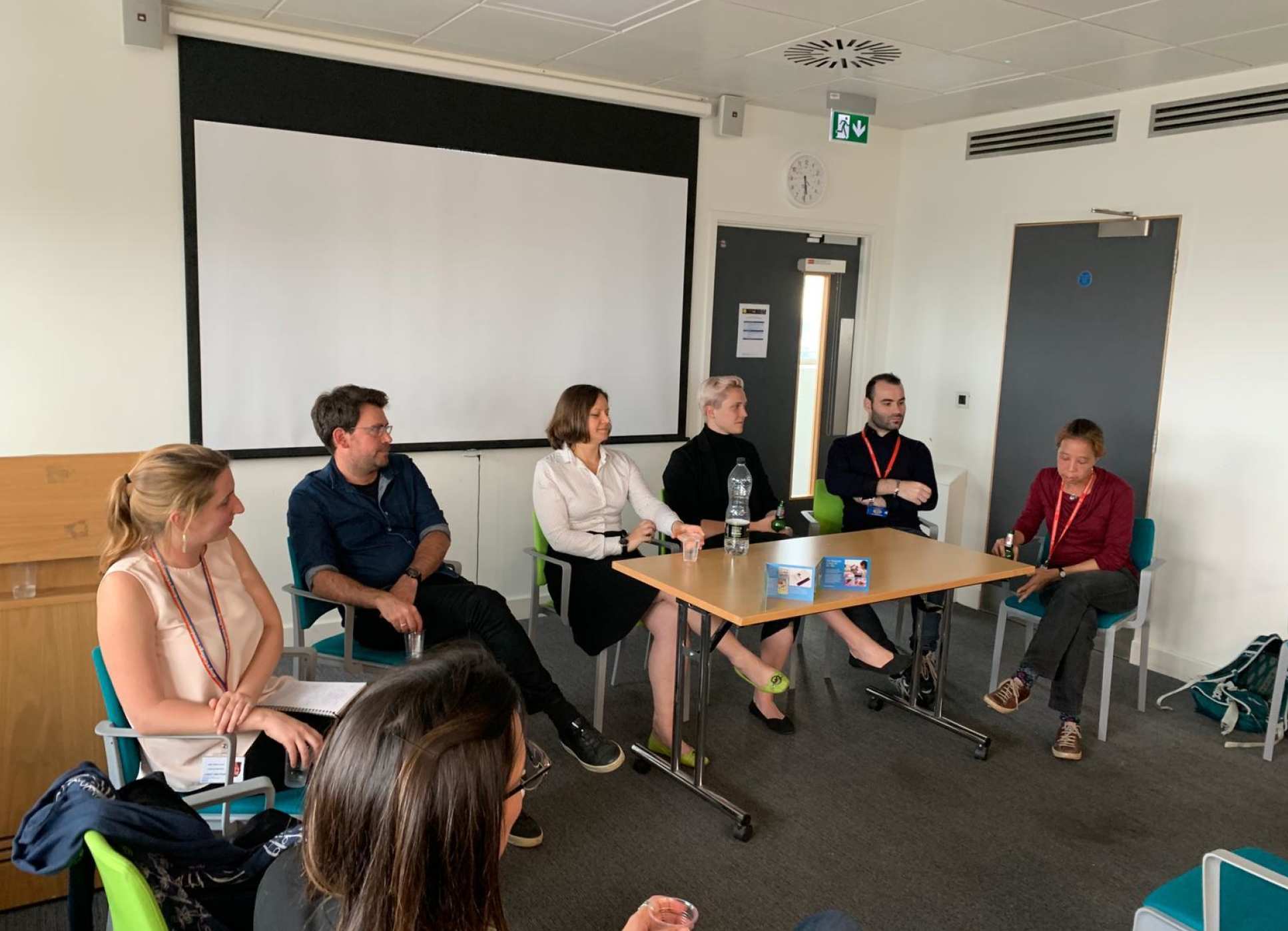
To support this initiation, Dr Esther Pearl (National Centre for the Replacement, Refinement & Reduction of Animals research) introduced the new ARRIVE guidelines and the Experimental Design Assistant. With the help of its academic partners and by using these new tools, NC3Rs are now working to develop regulatory, statistical and quality standards, as part of its goals to support the delivery of optimized experimental design, analysis and reporting of the animal experiments.
Although knowledge of chronic diseases has advanced during the past decades, many efforts to develop treatments have been unsuccessful. So, while researchers have been able to identify and treat the disease in rodent models, we have not been able to translate these advances to humans. One interesting solution came from Erin Slatery’s from University of Cambridge. She has been working on marmoset stem cells. Her talk recommended that marmosets or other non-human primates could be useful for better insight of stem cell biology and related drug development studies. Indeed, marmosets are evolutionarily close to humans, with similar anatomies, immune systems, and even social behaviours. As these animals smaller than most other monkeys, their lifespan and reproduction allow for quicker preclinical experiments. However, although there is some progress on marmoset induced pluripotent stem cells, the reprogramming in marmosets remains a challenge.
Dr Mirco Brondolin (King’s College London) described his work on zebrafish. Zebrafish could be another great model to test tissue injury and regeneration as they can regenerate spinal cord, retina, fins and even heart muscle. The talk focused on epigenetic control of muscle stem cells migration and differentiation in muscle regeneration in these fish. Still with the muscles and skeleton, Professor Karen Liu (King’s College London) summarised the significant body of work which the from her laboratory and collaborators had completed to carry out an analysis of a range of assays on neural crest cell population to find new ways in the repair of the face and skull. Their research made good use of multiple and complementary animal models, including frogs, mice, and chicks.

Although this may be a big step backwards in the evolutionary tree, a small and transparent nematode, Caenorhabditis elegans lives in the soil. C. elegans is another interesting model system to understand links between genotype and developmental phenotypes, in the presence of genetic or environmental changes. Dr Michalis Barkoulas (Imperial College London) works on a population of epidermal stem cells, also known as seam cells, which show robust stem-cell-like patterns of division in the animals. these hypodermic cells provide us with critical information on developmental events, cell division and conserved signalling pathways controlled by genes.
LSCN is a platform for all London research groups working in this area across all London Universities and Institutes. The LSCN aims to provide a networking platform for the London Stem Cell research community through several events including workshops on specific stem cell-related areas and annual symposiums.
2019 ISRMN Meeting 'Avenues of Innovation in Regenerative Medicine'
Monday 25th February 2019, 14.00-18.00
Imperial College South Kensington Campus
Lecture Theatre: 228, Royal School of Mines
This year’s meeting will be focusing on translational efforts in the fields of Stem Cells and Regenerative Medicine. We have confirmed a very exciting panel of speakers, that will share their experience from the industry and public funding institutions. Click here to register.
Paul Kemp
EuroStemCell & CEO of HairClone
Paul Kemp has been involved in virtually all aspects of the private and public Biotech business in both the USA and UK, from founding biotech companies, raising significant public, private and non-equity based funding in Europe, the USA and Asia.
Pervinder Sagoo & Mahesh Kudari
Senior Scientist and Medical Director, Orchard Therapeutics
Orchard therapeutics is a pioneer in the use of Stem Cells for drug development. Their pipeline includes Strimvelis®, the first autologous blood stem cell ex vivo gene therapy approved by the EMA in 2016.
Michael Kipping
Innovation Lead, Biomedical Catalyst, Innovate UK
Innovate UK is UK's innovation agency, having invested £2.2 billion for business-led innovation.
21 February 2017 - 5th Half-day meeting
Another dynamic meeting with talks from Professor Robin Ali, Dr Harsh Amin, Dr. Stephen Patrick, Dr. Mark Allenby and Professor Athanasios Mantalaris.
View meeting programme
23 February 2016 - 4th Half-day meeting
A talk by Prof. Anthony Hollander from University of Liverpool, was followed by talks by ISRMN junior and senior members. We are now looking forward to the next meeting in September 2016.
30 September 2015 - 3rd Meeting: Posters and networking event
In September 2015 ISRMN organised a beer and pizza networking poster session. Following the keynote talk by Prof. Enrique Amaya from the University of Manchester, our members had the chance to vote for the best 3 posters. Congratulations to the winners!
24 October 2015 - 2nd Half-day meeting
Another exciting meeting, with presentations from Imperial ISRMN group leaders and postdocs and Prof Francesco Dazzi from Kings College London, as our external speaker.
15 May 2014 - Ist Half-day meeting
The 1st ISRMN meeting in May 2014 marked the launch of the Imperial Stem Cell and Regenerative Medicine Network and was greeted with great enthusiasm across the college.
Join our network
If you would like to become a member of the network please contact us.
- Sign-up
- Read about member benefits
Coordination and contact
Network Lead
Dr Michela Noseda
Network Lead
Dr Blerina Ahmetaj-Shala
Network Coordinator
Zuzanna Jablonska
Network Coordinator
Marine Secchi
General enquiries
ISRMNcontact@imperial.ac.uk
